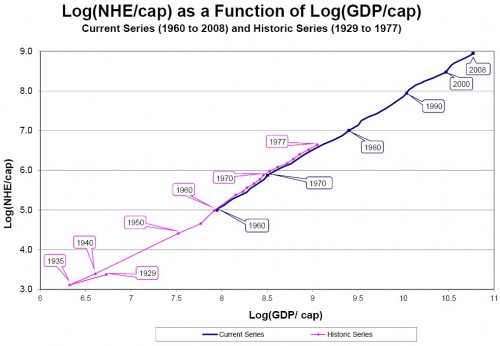In 1990, Japan had 3,000 people aged 100 and over, with the oldest being 114. Twenty years later, Japan has an estimated 44,000 people over the age of 100 – and the oldest is still 114.



If you look at newspapers and TV stations as mere businesses, not as public institutions with unique ethical standards, then you’ll notice a few things very quickly. One is that the Edward R. Murrow model of responsible news is kind of a sucky commercial product. Nobody who is in it for the money is going to ride that horse voluntarily.
The other is that the converse to the Murrow model is resoundingly true: that such things as hatred, resentment, narcissism, fear, secret lusts, and, yes, Schadenfreude have limitless markets, and businesses based upon sales of those things can compete with anything, from investment banking to consumer retail to drug trafficking. People will not stop what they’re doing to listen to a lecture about the dangers of dioxin poisoning, or corruption in Pentagon contracting. But they will stop to gawk at a headless body hanging out of the windshield of a wrecked car.
This was the basic insight that propelled Murdoch to his fortune.
Researchers are questioning the value of safety-first playgrounds. Even if children do suffer fewer physical injuries — and the evidence for that is debatable — the critics say that these playgrounds may stunt emotional development, leaving children with anxieties and fears that are ultimately worse than a broken bone.
“Paradoxically,” the psychologists write, “we posit that our fear of children being harmed by mostly harmless injuries may result in more fearful children and increased levels of psychopathology.”
Consider this question: What percent of our ancestors were women?
It’s not a trick question, and it’s not 50%. True, about half the people who ever lived were women, but that’s not the question. We’re asking about all the people who ever lived who have a descendant living today. Or, put another way, yes, every baby has both a mother and a father, but some of those parents had multiple children.
Recent research using DNA analysis answered this question about two years ago. Today’s human population is descended from twice as many women as men.
I think this difference is the single most underappreciated fact about gender. To get that kind of difference, you had to have something like, throughout the entire history of the human race, maybe 80% of women but only 40% of men reproduced.
I think I've shared this before, but it's interesting the second time through too.
If health is a luxury good, why should we expect the health spending trajectory to change?
The chart shows that on a log-log scale, the relationship between per capita national health expenditures and per capita GDP is ram-rod straight and has been since 1935.* Based on several statistical tests, Woodward and Wang conclude that there are
no significant changes in either the intercept or the slope for the years of any of the major reforms of the period, including the introduction of Medicare and Medicaid in 1966, in the years following Nixon’s Wage and Price Controls and the health planning legislation of the early 1970s, in the years following Medicare’s introduction of the Prospective Payment System in 1984, or after the widespread adoption of managed care in the 1990s.
With such overwhelming evidence from our past that, despite our efforts, this national health spending curve has not bent, why do we think the future will be much different?
I first heard about the secret bookshop, Brazenhead Books, from my friend Rachel Rosenfelt, founder of the literary website The New Inquiry. Rachel described Brazenhead as a mecca for book lovers and as one of those rare New York City gems, an extremely fascinating, yet unknown, spot...
Ethernet won the battle for LAN standardization through a combination of standards body politics and a clever, minimalist—and thus cheap to implement—design. It went on to obliterate the competition by seeking out and assimilating higher bitrate protocols and adding their technological distinctiveness to its own. Decades later, it had become ubiquitous.
If you've ever looked at the network cable protruding from your computer and wondered how Ethernet got started, how it has lasted so long, and how it works, wonder no more: here's the story.
“He said really we ought to all start to think about things we can do rather than things we can’t.”

